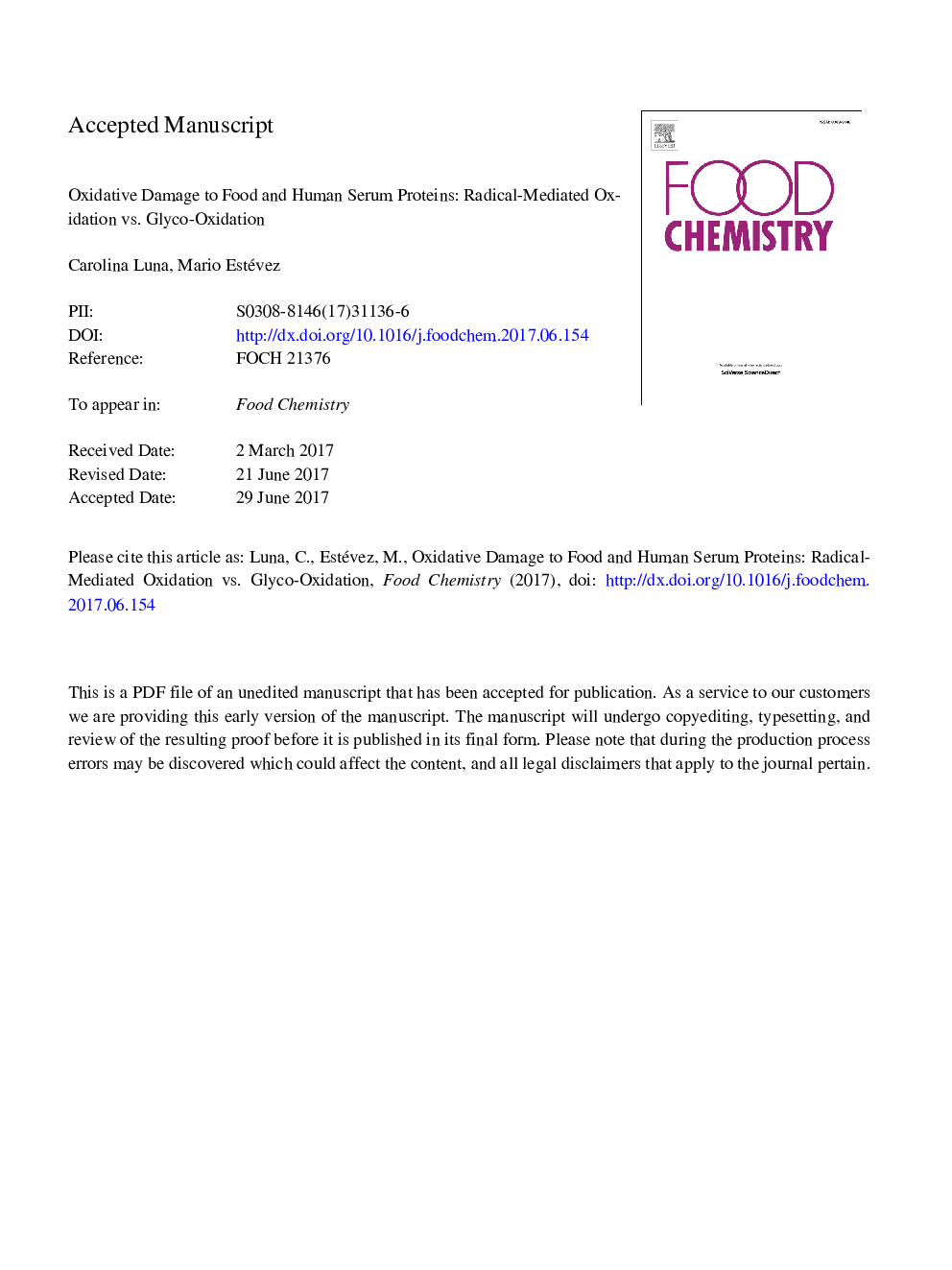| Article ID | Journal | Published Year | Pages | File Type |
|---|---|---|---|---|
| 7584398 | Food Chemistry | 2018 | 28 Pages |
Abstract
This study compared a hydroxyl radical-generating system (HRGS) (0.05-0.2 mM Fe3+ + 0.6 mM H2O2) and a glycation system (GLY) (0.05-0.2 mM Fe3+ + 0.05 M glucose) for their ability to promote protein carbonylation and tryptophan depletion in myofibrillar proteins, ovalbumin, β-lactoglobulin, soy protein and human serum albumin. Animal-source were more susceptible to protein carbonylation than soy proteins and globular were more susceptible than fibrillar proteins. Both systems promoted tryptophan loss and the formation of protein carbonyls and iron had a clear dose-effect in most systems and proteins. In the tested conditions, the GLY environment was more effective than the HRGS system in promoting the oxidative damage to food proteins. According to the results, glucose and H2O2 may compete for iron for the production of glycosylative and oxidative species, respectively. This study provides original insight into the chemical mechanisms implicated in the oxidative and glycosylative damage to food proteins.
Related Topics
Physical Sciences and Engineering
Chemistry
Analytical Chemistry
Authors
Carolina Luna, Mario Estévez,
